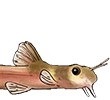Shane wrote:
Kathy,
You are greatly misrepresenting what I said. We have yet to positively identify the above sp and it was not (unfortunately) measured.
By way of background:
Kathy posted on another forum that PC's sizes for the various "common pl*cos" were wrong and cited, as proof, that 24" L. pardalis were "ten a penny" in the UK.
My response was, "PC has been around for 10 years and in that time none of us has ever seen or been sent a photo of an 18-24" SL L. pardalis. The second someone provides one we will make the necessary changes to the site to reflect this information."
-Shane
No, you're misrepresenting me. Anyone can read PF and see what I said. I said I've seen tonnes of "common plecs" characterised as liposarcus pardalis as handins in my LFS at way over 9.8" which your site is saying is the maximum, You said that you could believe that one might reach 11-12" maximum, but anything over that is "exaggeration". Now I personally have seen a common that looked to me to be nearing 2ft in TL. I can concede that it could've been less, maybe 18" SL, then tail added on. What I saw was to me identical to pics you've IDed on PF as liposarcus pardalis, and looked the same as this one. I've seen them sold on eBay regularly way over 9.8" SL, although if these "albino commons" and "commons" are a different species I'm happy to stand up and say I'm wrong, along with everyone else that has IDed them as such. I'm not the only person who has seen big commons, most people on PF who are more experienced than me warn people regularly that liposarcus pardalis reaches 18"-2ft, I myself have seen the whopper I posted above about, and several nearly 18" ones. I suspect just as I might judge slightly over, you must judge a fair bit under - someone measured their gibby on PF and you told them they were wrong by over 6" despite the photograph - your reasoning was that it was away from the tapemeasure (which I can concede makes it inaccurate, but doesn't distance take away size, not add to it?), etc, but that gibby was a fair bit bigger than you suggested to my eyes at least. I respect you have good intentions and want to be sure, but you can't deny everyone else's experiences or shut them off as liars as you have with me - I'm quite happy to be wrong on this, tell me what I've seen and I'll take it all back. "Commons" (whatever they turn out to be) DO go over 11-12", I've seen them bigger than that with my own eyes - like I have said over and over, show me a plec that is sold as "common" that isn't a gibby and is close enough to liposarcus pardalis to be identical to the untrained eye and I'll be happy to change my views. I don't want a fight, I just want to know the truth. I'd personally love a common but daren't get one in case I was right about their adult sizes, along with everyone else that has warned me. It's not helping me if I turn out to be right, it's hindering, so if you have an alternative explanation, you'll make my day ;)
Edited to add: Hey Shane - if I buy one of them and it exceeds 12", can I have your address to ship him to you? *lol* That can be my backup plan!








